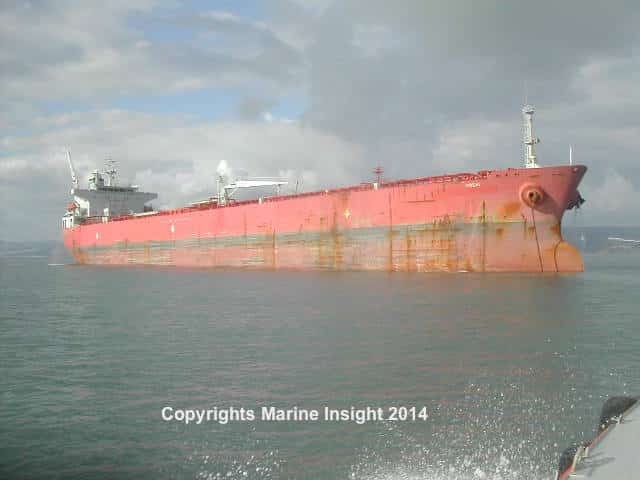The Story of Lego Shipwreck with 5 Million Pieces of Lego Lost at Sea
For many years, locals and tourists have been finding much more than just seashells on the beaches of Cornwall, England’s southwestern peninsula.
Ocean-themed Lego pieces, including octopuses with tentacles, scuba gear, whales, divers’ flippers, sea grass, life rafts, life jackets, dolphins, and dragons, are among the five million Lego pieces lost at sea when the container ship Tokio Express hit a rogue wave.
The accident spilt five million Lego pieces into the water, most of which are still being found today. Collecting these plastic Lego pieces captured the hearts and minds of locals shortly after the accident, especially children who competed to find the most pieces.

Before we delve deeper into the details, let us know more about the ship Tokio Express.
The Container Ship- Tokio Express
Tokio Express was a container ship registered in Hamburg. She was completed in 1973 and operated by Hapag-Lloyd. She exchanged hands, acquired by Westwind International in 1997 and Falani in 1999 before it was broken into pieces for scrap in 2000.
It was one of the four trio-class container vessels constructed in the 1970s. These 3000 TEU vessels included the Hamburg Express, the Bremen Express, the Tokio Express and the Hongkong Express.
These vessels had a twin screw, but in the 1980s, they underwent refitting and were converted to single screw propulsion, though one of their turbines was retained.
Tokio Express Accident, which spilled 5 million Lego pieces
On February 13, 1997, the Lego ship Tokio Express was on its way to New York City from Rotterdam when she was struck by a rogue wave 32 km off Land’s End, a headland in western Cornwall, England, U.K. To its east lies the English Channel, and its west, the Celtic Sea.
Tokio Express tilted dangerously to one side by 60 degrees and then 40 degrees back, leading to the loss of 62 containers. Among them was a container with around five million Lego pieces, most made for toy kits themed around sea adventures, in line with the Lego Aquazone and Lego Pirates.
The plastic legos were on their way to be made into sets in North America. Nobody knows how the container opened, but it released a trail of colourful Lego pieces found along Cornish beaches.
The Lego pieces contained 418,000 plastic swimming flippers, 13,000 spear guns, 4,200 octopuses, sea grass, dragons, cutlasses, 97,500 scuba tanks, 26,600 life preservers, 88,316 bunches of plastic flowers, over 18,000 pieces for reefs and castle walls.
These pieces of plastic have survived so long in the waters that even in 2023, 26 years after the accident, also known as the Great Lego Spill, people find them on beaches or shores in England and as far as Ireland and Belgium.
They have retained their shape and colour and are often washed ashore or caught in fishing trawlers’ nets. In fact, the pieces are said to have travelled much larger distances.
Some pieces, such as the octopuses and green dragons, are said to be rare and much sought after by beachcombers and collectors, while other pieces, like flowers or grass, are usually sent for recycling.
Aftermath of the ‘Great Lego Spill’
When the accident happened, the Lego pieces did not make headlines as much larger fears were the initial cause of concern.
The next morning, the Western Morning News reported that 17 metal cases from Tokio Express, each the size of a double-decker bus, were being pushed along the seas towards The Lizard. Many of them were loaded with dangerous chemicals and irritant superglue.
There were fears that the containers would explode if the chemicals came into contact with the air. Hence, a Tug of the Falmouth Coastguard travelled along the massive flotsam to warn ships and small fishing craft. Locals and beachcombers were warned not to open the 40-foot containers even if they were washed on beaches.
As days passed by, people found tiny capsules of resin methyl methacrylate on Cornish beaches, including Loe Bar and the Lizard. Coastguards and others began a clean-up effort.
Fishermen in South Cornwall worried that the chemicals would damage their boats and trawlers; however, the government assured them they were not dangerous.
On the South Devon shores, the 10,000 disposable lighters washed ashore from one of the ship’s containers alarmed the South Hams District Council. The accident was taken care of, and the fervour died eventually, until 6 years later, when the Lego container was washed ahore at Devon’s Bantham Beach in Jan 2003.
Lego Company Issued Finders Keepers Statement
Officials of the Lego Company brought a finders keepers statement and told people they could keep the pieces they found, but they should wash them thoroughly first. The company also started a hotline so people could tell where they found the pieces, and they could provide help with clean-up operations.
The Lego Fever Among Locals & Beachcombers
Tracey Williams a local of Cornwall, a beachcomber and environmental campaigner was intrigued by the Lego Spill and the mountains of other plastic flotsam she saw. She described her findings and work in her book, Adrift: The Curious Tale of the Lego Lost at Sea.
She loved to clean beaches and research the impact of plastics at sea. Tracey has found hundreds of Tokio Express Lego pieces over the years, and she has also tracked some of their journeys, which she shared with other collectors and oceanographers through her Facebook community page, Lego Lost At Sea, which now has thousands of subscribers.
Tracey Williams was one of the many who found thousands of Lego pieces washed on England’s beaches in 1997. This discovery fascinated her, and she saw how beachcombing changed after the Lego spill. She photographed her Lego finds, which she calls, ‘ a catalogue of our time.’
She also talked about her first find, a plastic Lego seagrass. She recounted how weird it felt to see plastic seaweed and took it home to show her family.
She underlined that the dragons and octopuses were considered rare finds. There were 4,200 octopuses and 33,427 black dragons. However, the green dragons were the most rare since they numbered just 514.
She also said that it is illegal to sell the Lego pieces and that one must report them to the government Receiver of Wreck.
The best time to look for Lego pieces was after high spring tides and strong winds. She said much of the Lego is stuck between rocks and sand dunes, while other pieces are floating in the water. Some lie on the seabed, occasionally found by fishing trawlers.
The Lego Lost at Sea: An Award-Winning Project
When she started keeping a record of the Lego pieces, Tracey had no idea that her work would be globally recognised and would become an award-winning project involving oceanographers, a book, an exhibition and even a movie!
Tracey’s Lego Lost at Sea project won the Rescue Project of the Year in the Archaeology Awards and was also the subject of an exhibition at the Royal Cornwall Museum.
She is known as the Lego Lady. She frequents the fishing villages in Cornwall, where she waits for trawlers so fishermen can report to her about the Lego pieces. She mentioned that one of her favourite finds is a tiny tool wheel since only a single one has been found yet. The Lego company also sent the researchers a list of the container contents.
The Dark Side of the Lego Spill: Plastic Pollution
A researcher involved in this project, Dr Curtis Ebbesmeyer, said that ocean currents could carry Lego past Norway into the Arctic Ocean and Alaska. Some pieces could even reach Japan, western Canada, and California.
In 2017, a Cornwall resident, Rob Arnold, and 12 others collected around 6 million pieces of microplastics from a nearby beach. Twenty years after the incident, they found several Lego bits and pieces among the plastic, such as 240 Lego flippers.
Plastic takes centuries to degrade, and as it does, it releases chemicals that disrupt the reproductive system of animals, per Live Science. The coming generations would experience the aftermath of the accident.
Also, a study published in Environmental Pollution in 2020 found that after Lego pieces were analysed with X-ray fluorescence, it would take 1300 years for the 1997 Lego pieces to degrade completely.
According to the IUCN, around 14 million tonnes of plastic enter the oceans each year, making up to 80% of all marine debris found in sea sediments and floating on the surface.
After the accident, the Tokio Express went to Southampton for repairs. However, the fate of the Lego container, whether it broke up or lies on the seabed, remains unknown.
Tracey Williams is working with a film crew. She said that she is interested in finding out if the container exists, and if so, it must be found with all the other missing Lego pieces, such as the 50,000 sharks.

About Author
Zahra is an alumna of Miranda House, University of Delhi. She is an avid writer, possessing immaculate research and editing skills. Author of several academic papers, she has also worked as a freelance writer, producing many technical, creative and marketing pieces. A true aesthete at heart, she loves books a little more than anything else.
Disclaimer :
The information contained in this website is for general information purposes only. While we endeavour to keep the information up to date and correct, we make no representations or warranties of any kind, express or implied, about the completeness, accuracy, reliability, suitability or availability with respect to the website or the information, products, services, or related graphics contained on the website for any purpose. Any reliance you place on such information is therefore strictly at your own risk.
In no event will we be liable for any loss or damage including without limitation, indirect or consequential loss or damage, or any loss or damage whatsoever arising from loss of data or profits arising out of, or in connection with, the use of this website.
Do you have info to share with us ? Suggest a correction
Disclaimer :
The information contained in this website is for general information purposes only. While we endeavour to keep the information up to date and correct, we make no representations or warranties of any kind, express or implied, about the completeness, accuracy, reliability, suitability or availability with respect to the website or the information, products, services, or related graphics contained on the website for any purpose. Any reliance you place on such information is therefore strictly at your own risk.
Related Articles
Daily Maritime News, Straight To Your Inbox
Sign Up To Get Daily Newsletters
Join over 60k+ people who read our daily newsletters
By subscribing, you agree to our Privacy Policy and may receive occasional deal communications; you can unsubscribe anytime.






BE THE FIRST TO COMMENT